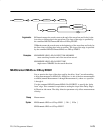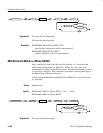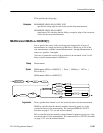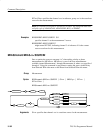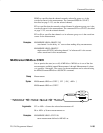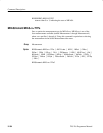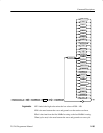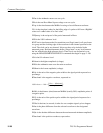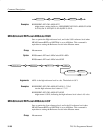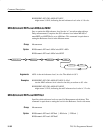
Command Descriptions
TLS 216 Programmer Manual
2–187
POVershoot + 100
ǒ
(Maximum * High)
Amplitude
Ǔ
PWIdth is the distance (time) between MidRef (usually 50%) amplitude points of
a positive pulse.
RISE is the time that it takes for the leading edge of a pulse to rise from a low
reference value to a high reference value of its final value.
RMS is the true Root Mean Square voltage.
SETUp is the time between the last transition to a legal state for all waveforms in
a group and the clocking edge of the waveform specified as the clock. The clock
can be any channel. It does not have to be included in the measured group. Setup
measurements define “legal state” as a level either below the low reference level
or above the high reference level. These levels can be queried or set using the
MEASUREMENT:REFLEVEL commands that begin on page 2–189.
SKEw is the time between the first transition to an illegal state for all waveforms
in a group and last transition to a legal state for the same waveforms. Skew
measurements define “legal state” as a level either below the low reference level
or above the high reference level. They define an “illegal state” as a level
between the the low and high reference levels. These levels can be queried or set
using the MEASUREMENT:REFLEVEL commands that begin on page 2–189.
MEASUREMENT:MEAS3:TYPE RMS
specifies MEAS3 to calculate the Root Mean Square voltage.
MEASUREMENT:MEAS4:TYPE?
might return HOLDTIME.
MEASUrement:MEAS<x>:UNIts? (Query Only)
Returns the measurement units for MEAS<x>. MEAS<x> is one of the four
measurements available (named Measurement 1 through Measurement 4) where
<x> specifies 1 through 4. The type of measurement selected (see the MEASUre-
ment:MEAS<x>:TYPE command) determines the unit type returned.
Measurement
MEASUrement:MEAS<x>:UNIts?
Examples
Group
Syntax



